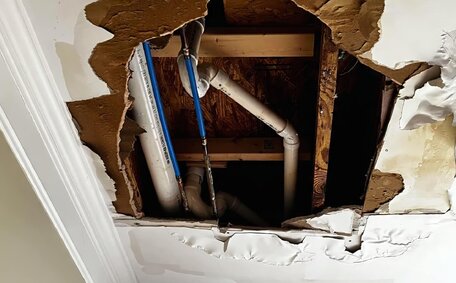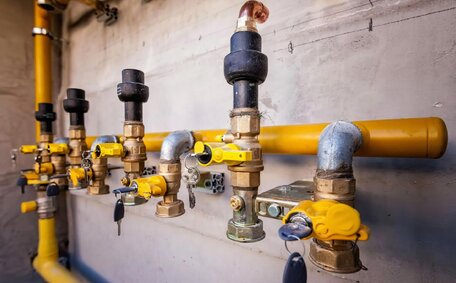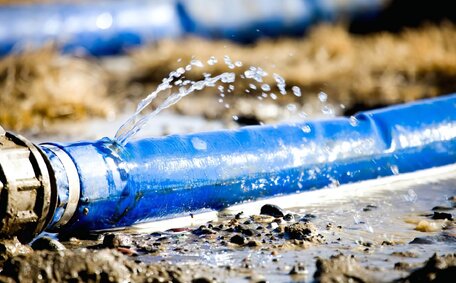Understanding Hot Water Systems: An Overview
Hot water systems provide critical services like bathing and cooking in Lindfield homes and businesses through advanced technology. A reliable hot water system guarantees consistent access to sufficient hot water for daily activities.
There are several types of hot water systems commonly used:
- Electric storage systems
- Gas hot water systems with storage capabilities
- Solar hot water systems
- Heat pump systems
- Tankless systems
In this guide, we’ll explore how different hot water systems elevate water temperatures, focusing on key components, installation factors, energy efficiency, and proper maintenance.
Whether you’re opting for a new gas hot water system or troubleshooting an existing appliance, you’ll understand how a storage hot water system can facilitate safe and prompt hot water delivery.
Main Types: Electric, Gas, Solar, Heat Pump, and Tankless Systems
There are several main types of hot water systems used in Lindfield homes and businesses:
- Electric storage hot systems - Heat water in an insulated storage tank through gas or electric options. Integrating a PV system can counterbalance higher running costs, making these systems a smarter, cost-effective option.
- Gas storage - Water is heated by burning natural gas or LPG via a central gas burner. The water is stored within the tank where the storage water heater functions. Gas systems have higher upfront costs but can have lower operational expenses.
- Solar - Solar thermal panels harness solar energy to transit through hot water systems. This pre-heated water flows into a hot water tank with electric or gas heating as a backup on cloudy days.
- Heat pump - Heat pump water heaters efficiently extract and heat air, drawing latent warmth from the surrounding atmosphere to raise water temperatures. Heat pump water heaters excel in energy efficiency and perform best in warmer climates.
- Gas tankless continuous flow heaters - Provide hot water as it’s required without the need for a storage tank. Gas tankless water heaters enable an impressive flow rate to flow hot water endlessly but may require upgraded gas lines.
How Electric Storage Systems Function and Operate
Electric water heaters, which commonly utilise resistance heating elements, are the predominant type in Lindfield homes. Electric water heaters feature an insulated storage tank, typically holding about 315 litres of water, with one or more electric heating elements inside the tank controlled by a thermostat.
When you turn on the tap, cold water is propelled into the tank’s base through a dip tube, directing it to the heating element. The electric element takes action to heat up the water to at least 60°C, halting Legionella and unwelcome bacterial growth, ensuring a continuous supply.
As more warm water is drawn from the top tank, the drop in water pressure informs the thermostat to turn on the electric element again, demonstrating how hot water systems work to reheat the water in the tank. The thermostat ensures the water is continually maintained at a hot enough temperature.
Other key components include the anode rod to prevent tank corrosion, insulation around the tank to retain heat, and a pressure relief valve that opens if pressure or temperature gets too high to discharge water and reduce risk.
Electric hot water systems provide a reliable supply of warm water on demand. But when hot water is not used, without sufficient insulation, you might run out hot and the water can cool in the tank and pipes when not in use. Running costs hinge on the extent of water use to ensure you don’t run out and on prevailing electricity tariffs.
How Gas Water Heaters Work
Gas storage water heaters employ a gas burner situated beneath an insulated tank to effectively heat water. When you turn the hot water tap, cold water enters the bottom of the tank through a dip tube, guiding it directly to the heat exchanger.
As the gas burner ignites, the heat exchanger which wraps around the burner, transfers heat into the cold water. This heated water then rises up through the tank due to convection currents.
The system is ingeniously crafted to supply hot water promptly from the top of the tank, poised for delivery to your house, while cooler water enters the bottom to be reheated.
The system operates on natural gas or LPG to power the efficient gas burner. Key components include:
- Gas control thermostat and sensors for water temperature regulation
- Pilot light that ignites the main burner
- Flue pipe to vent exhaust gases
- Pressure relief valve as a safety precaution
Gas water heaters, although often more costly upfront, reliably deliver a consistent supply of warmth whenever it’s needed. As hot water is drained, the drop in tank pressure triggers the thermostat to reignite the burner when more heat is required.
Installation Essentials
Electric water heater installation in Lindfield must comply with all applicable standards and regulations for safety and reliability. This includes:
- Meeting the requirements of AS/NZS 3500, the Plumbing Code of Australia, for proper plumbing and drainage.
- Using a licenced plumber who is qualified to install gas, electric, solar, heat pump or tankless systems correctly.
- Securing suitable electrical connections and ensuring sufficient circuit capacity for storage tank or heat pump water heaters.
- Enhancing gas lines if necessary for tankless or complete home installations.
- Proper ventilation of tankless heaters and combustion appliances is crucial for energy conservation.
- Selecting optimal locations for outdoor components, including solar collectors and external heat pump water storage units.
- Confirming the storage tank or tankless heater water system can adequately meet your usage.
The team at Lindfield Plumbing have years of hot water system installation experience. We stay current on all standards and best practises to facilitate your hot water system installations safely. Contact us if you need a new hot water system or are upgrading an existing one.
Temperature Control Mechanisms
Precise temperature control is critical in hot water systems to ensure the water is heated to a safe level to prevent bacterial growth, while also preventing overheating. Here are the main temperature control mechanisms used:
- Thermostats - Thermostats regulate water temperature by cutting power to the heating source when the desired temperature is reached. They allow the water to cool slightly before turning the heating back on. Thermostats in electric and gas storage tanks are typically set to 60°C.
- Sensors - Tankless heaters have sensors that continually monitor outgoing and incoming water temperatures. They work with the gas valve or heating element, tweaking the heating process accordingly for warming water to reach the set temperature without overheating.
- Mixing valves - Tempering valves automatically blend hot tank water with cold water to reduce temperature to a safe level before delivering it to plumbing fixtures. This prevents scalding.
- Insulation - Storage tanks and pipes are insulated to minimise heat loss. This retains water temperature for longer periods between heating cycles.
Maintaining how hot water temperature is key for safety. The team at Lindfield Plumbing can help inspect and adjust your system’s temperature controls if required during servicing.
Key Components: Thermostats, Valves, and Insulation
Thermostats, valves, and insulation are critical components that regulate temperature, pressure, and heat retention in hot water systems.
Thermostats
Thermostats control water temperature by cutting power to the heating element or gas burner when the desired temp is reached. In storage tanks, thermostats are typically set to 60°C. Issues include inaccurate readings and failure to turn the heating on or off properly.
Valves
Pressure relief valves act as a safety measure, releasing water when temperature or pressure exceeds safe levels. Other valves like tempering valves mix hot water with cold to prevent scalding at fixtures. Faulty valves require replacement.
Insulation
If pipes or tanks feel hot to the touch, assessing how much the insulation may need to be rewrapped or replaced is key to improving energy efficiency.
The Lindfield Plumbing team can inspect and test these components during annual services to identify any issues requiring attention.
Optimizing Efficiency and Performance
Using hot water efficiently can preserve your heater’s efficiency and lower energy costs. Ensure insulation wraps pipes and storage tanks to minimise standalone heat loss. Annual servicing by technicians can inspect components and proactively address issues, taking water demand and usage patterns into account when considering replacement systems.
A timer can curtail heating during low-demand hours, such as overnight, and operating heat pumps during warmer months is more energy-efficient.
Straightforward upgrades can lead to savings and lower energy consumption than traditional systems, all while improving performance.
Insulating exposed hot water pipes can save over 200 kWh annually. Installing heat pump or solar systems does reduce gas and electrical expenses, albeit with a higher initial investment. We’re happy to assess your existing system and projected expenses of upgrades to find the optimal efficiency solution for your home.
Safety and Maintenance Checks
Regular safety and maintenance checks ensure smooth operation of your hot water system. We recommend annual inspections by Lindfield Plumbing to test temperature and pressure relief valves, check pipe and tank insulation, replace anode rods if corroded, flush the system to remove sediment, and more.
Monthly visual inspections for leaks, drips from taps, damaged cables or gas lines, strange noises, and excessive condensation or tank rust are also advisable.
For gas systems, ensure the burner flames are blue—indicating proper combustion—rather than yellow or orange. Consult Lindfield Plumbing immediately about any potential problems identified.
Reach out to us at [email protected] or 1300 349 338 for discussions on system maintenance or installation.
Lindfield Plumbing offers tailored replacement solutions matched to your household size and water usage patterns. Track your hot water usage and consider upgrading to a more efficient system as necessary.






